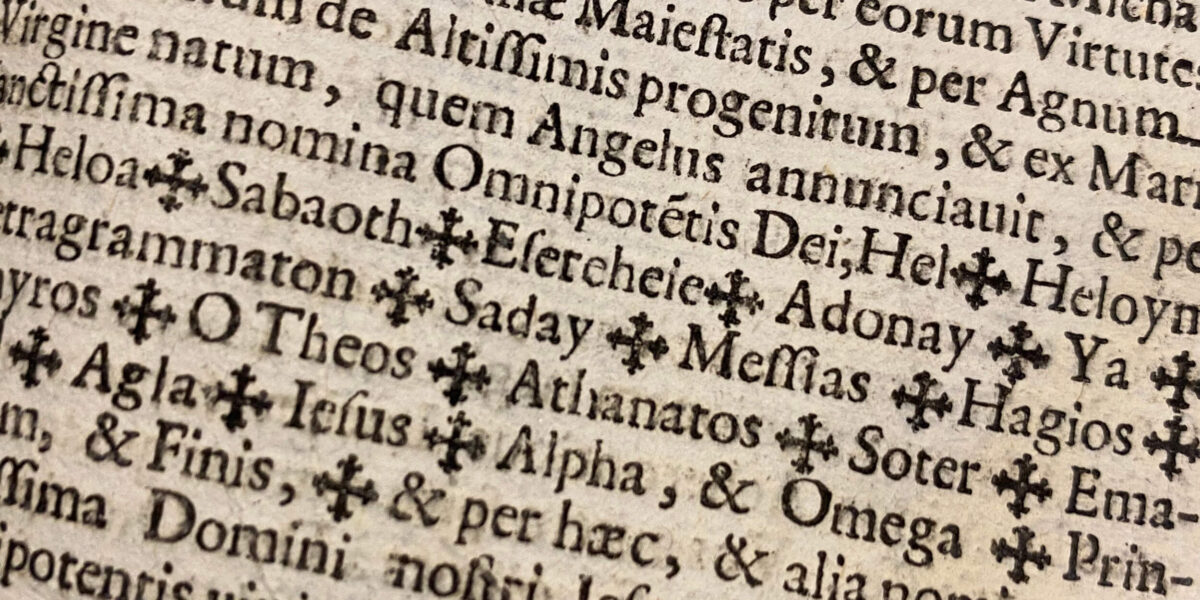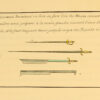POtentissimorum, efficacissimorum, cum PRACTICA probatissima: QUIBUS SPIRITUS MALIGNI, Daemones Maleficiaeq[ue], omnia de Corporibus humanis obsessis, tanquam FLAGELLIS FUSTIBUSQUE FUGANTUR, expelluntur, doctrinis refertissimus atq[ue] uberrimus: Ad maximam EXORCITARUM commoditatem in lucem editus & recusus: Cujus Authores, ut & singuli tractatus, sequente pagella consignati, inveniuntur
by Valerio Polidoro; Girolamo Menghi; Zacharia Visconti; Pietro Antonio Stampa, Cologne: Impensis Lazari Zetzneri, 1608
Grimoires, Almanacs, and Books of Secrets were popular handbooks of magic but the most influential occult products of the print age were Exorcism Manuals, initially endorsed by the Catholic church as ammunition in their war against satan. The exorcism rites found in these texts we’re almost indistinguishable from the conjurations found in grimoires. Because of this, Exorcism Manuals were sometimes used as Grimoires to conjure up demons rather than banish them for such purposes as treasure seeking, gambling, and curing impotency. As a result several exorcism manuals were added to the papal index in 1709.
Thesaurus Exorcismorum atque conjurationum terribilium is a Collection of Six Works of the Most Important Franciscan Exorcists of the 16th century: Valerio Polidoro, Girolamo Menghi, Zacharia Visconti, and Pietro Antonio Stampa. It was first printed in 1608 and republished after the Catholic Church standardized the rite of exorcism in the Rituale Romanum (1614). Thesaurus Exorcismorum served as a compendium for practicing exorcists and is now regarded as one of the primary sourcebooks for demonology.
I. Practica exorcistarum & Dispersio Daemonum by Valerio Polidoro
The first and second works, Practica exorcistarum and Dispersio Daemonum, were written by the Paduan Valerio Polidori. They begin with a theoretical section on the names of the devil, the exorcist’s behaviour and the nature of demons, proceeding to practical arguments on the phases of exorcisms, touching for instance on confession, the exorcist’s clothing, readings, blessings or the delivery of a house from the demon. He also instructs the exorcist on how to acquire the name of a demon so as to write its name on paper above its image and then set fire to it.
II. Flagellum Daemonum and Fustis Daemonum by Girolamo Menghi
The third and fourth, Flagellum daemonum and Fustis daemonum, were the work of Girolamo Menghi, Italian priest of the Order of the Franciscans, is perhaps the most recognized exorcist of all time. He traveled through Italy carrying out countless exorcisms and wrote numerous treatises on this subject containing different rituals and prayers to combat the various types of demons and spirits.. Flagellum focuses on the exorcist, providing instructions on his behaviour (patience and perseveration, formulas and gestures), the time and place for exorcisms, and whether they should be carried out privately or publicly. Fustis devotes greater room to the nature and power of demons, including causing illnesses.
III. Complementum artis exorcisticae by Zacharia Visconti
The fifth, ‘Complementum artis exorcisticae’, was written by the Milanese demonologist Zaccaria Visconti (d.1600). Interesting are his sections on the physical signs by which one can recognise a person possessed by a demon, and a long list of herbal remedies in the form of oils, fumes, eye drops, etc., which can be given to ‘indaemoniati’ to make them expel the demons, for instance, by throwing up or evacuating.
IV. Fuga Satanae by Pietro Antonio Stampa
The sixth, Fuga Satanae, by the Italian father Petro Antonio Stampa, was one of the most important and popular manuals of exorcisms of his time.However, the work of Stampa gained notoriety by the list of the different names and titles of the Devil, as well as his assistants and other demons. It also includes a list of the Holy Scriptures that can be used to fight each one of them. Stampa was considered one of the greatest authorities in the fight against demonic forces.
Because of its length, I have divided Thesaurus Exorcismorum into fours parts, one for each Exorcist. In the ‘Related’ section I have included five additional Exorcism Manuals that when combined with Thesaurus Exorcismorum accommodate for the 10 most important works on exorcism ever written.




